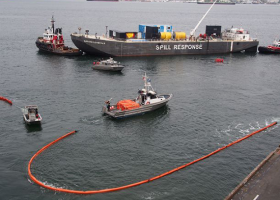Exxon Valdez Oil Spill
On March 24, 1989, the tanker Exxon Valdez grounded on Bligh Reef in Alaska's Prince William Sound, rupturing its hull and spilling nearly 11 million gallons of Prudhoe Bay crude oil into a remote, scenic, and biologically productive body of water.
Prior to the 2010 Deepwater Horizon oil spill, it was the largest single oil spill in U.S. coastal waters. In the weeks and months that followed, the oil spread over a wide area in Prince William Sound and beyond, resulting in a previously unprecedented response and cleanup.
NOAA's Office of Response and Restoration (OR&R) was among the many local, state, federal, and private agencies and groups to provide immediate operational and scientific support during the assessment, response, and cleanup phases.
In the role of science advisers to the Federal On-Scene Coordinator, OR&R provided spill trajectory, resources at risk, and early spill impact information during the initial stages of the spill. Once the focus shifted from response to cleanup, OR&R addressed issues related to the effectiveness and environmental effects of cleanup technologies.
Learn more about OR&R's role in the emergency response, our work in Prince William Sound since the spill, and what lessons the Exxon Valdez spill offers for dealing with future oil spills.

